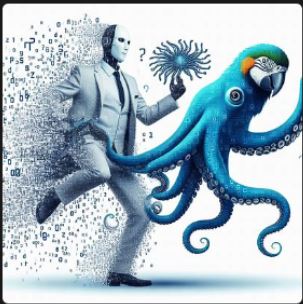AI, digitalization, and the emergence of man3: From Enfleshment to disembodiment?
DOI:
https://doi.org/10.14288/jaaacs.v16i1.198621Keywords:
Intelligence, Man, enfleshment , disembodiment, artificial intelligence (AI), digitsAbstract
This paper conceives of the structural injustices of modernity as grounded in a Euro-centric, humanist subject overrepresenting universal manhood (Sylvia Wynter’s “Man”) and engages with the question of moving from enfleshment to disembodiment in post-digital, AI-empowered contexts. Noting that digital technology relies on non-semantic “representation” tied to probability, i.e., binary digits, this paper explores how the sliding signifier of “intelligence,” an indicator of Man once incarnated in terms of moral capacities and phenotype/genotype, has been and is being newly enfleshed through the mutual formation of a “representation”-technology intertwinement. It illustrates that, first, to understand familiar institutional injustices related to Man, it is vital to pay attention to the multiple transitions of Man (to Man1, Man2, and man3). The paper maps these historical shifts in relation to Wynter’s analytics, the shifting inscriptions of enfleshment and intelligence, and the implications of such onto-epistemological gradients and reformulations within compulsory schooling’s histories. Second, the paper focuses especially on the digitally decentered emergence of man3, where “intelligence” is realized, particularly by AI, as flows of digits that attempt to invent, measure, and effectuate sets of emotions “universal” to all human beings. Here we offer three examples in AIEd of how the figure of Man remains operational despite an apparent disembodiment. Last, we consider the questions this leaves education in general and curriculum studies specifically with, when the seeming disembodiment occurring via binary digits does not lead to the eradication of discriminations once associated with semantic “representation.” Rather, enfleshment-as-information and as Life, and the emotional turn of AI, remain embedded in and contribute to a complex “representation”-technology intertwinement that is complexifying historical forms of enfleshing Man, and producing no less exclusion and violence than historical -isms have done.


